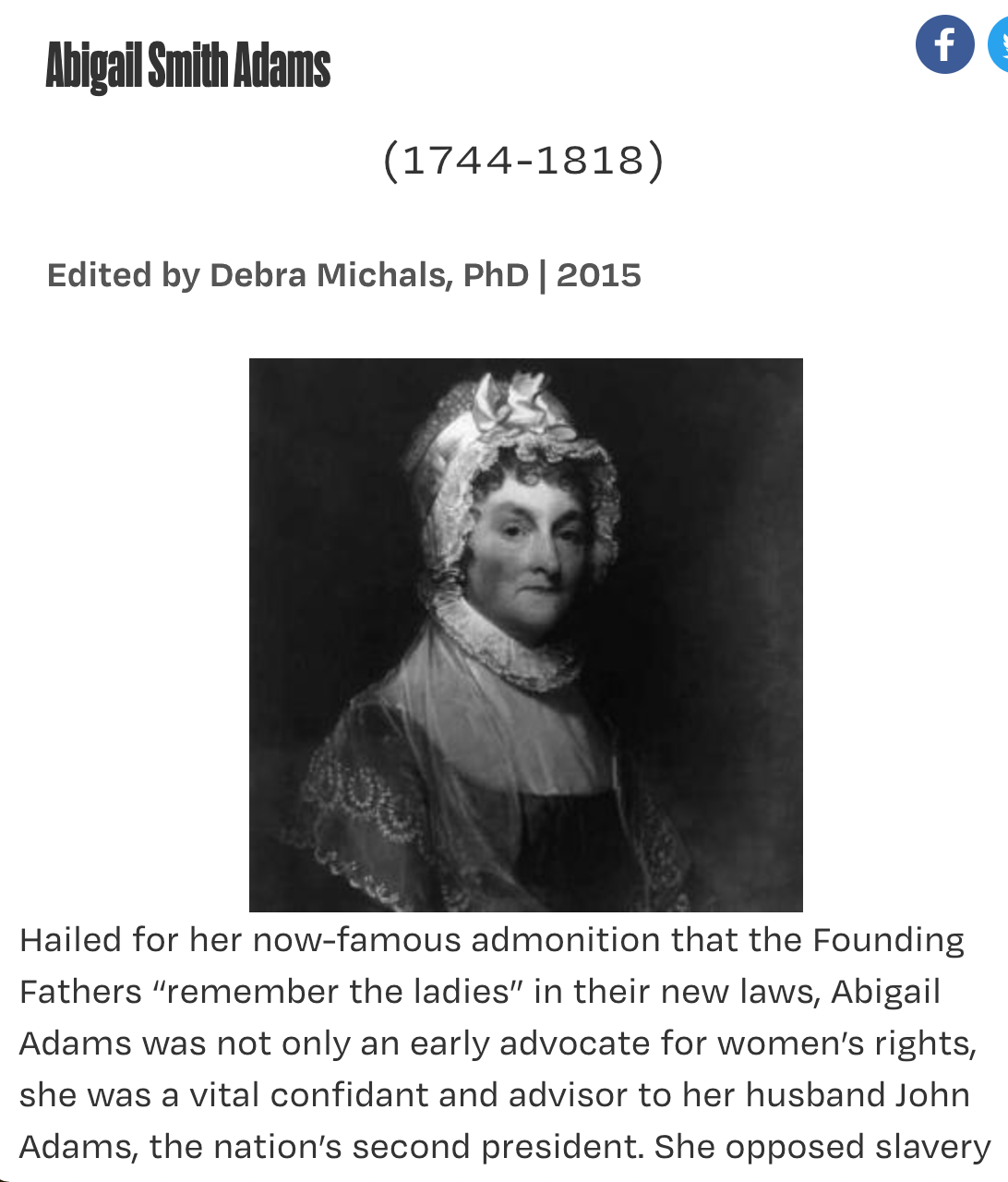Meet the women who fought in the American Revolution
(Reposted from July 2021)
You don’t have to shoot a gun to be a revolutionary.
The U.S. has prospered in part from the contributions made by women throughout history. Let’s take a look at the Revolutionary War that was fought from 1775 to 1783.
Abigail Adams was an early supporter of women’s rights. In fact, at the start of the American Revolution, she wrote a now-famous letter to her husband, John Adams, who was in the process of working on the Declaration of Independence. Here’s an excerpt:
“I desire you would Remember the Ladies. If particular care and attention is not paid to the Ladies, we are determined to ferment a rebellion and will not hold ourselves bound by any laws in which we have no voice or representation.”
A member of the upper class, Abigail Adams may not have been thinking of all women. However, there were other female revolutionaries at that time who made an indelible mark.
One was Phillis Wheatley. Born in West Africa and sold into slavery at the age of 7, Wheatley worked as a domestic for a Boston family who taught her to read and write. She became an acclaimed poet, and is best known for a letter she wrote in 1776 to George Washington lauding his efforts to free people from colonial oppression. Although it was hard for her to get published as a slave, Wheatley’s poetry is taught today as some of the best this nation ever produced.
A resounding achievement for its time
Although freedom from oppression was the driving mission of the American Revolution, slavery was not addressed for another century, until the Civil War. However, one woman took this upon herself and succeeded—before the Revolutionary War even concluded. This was Elizabeth Freeman, better known as Mum Bette. Also a slave in Massachusetts, Freeman filed a law suit, Brom and Bett v. Ashley. She argued that slavery was inconsistent with the state’s newly ratified constitution. And the Massachusetts Supreme Court agreed! Her case was instrumental in ending slavery in the state. We hear a lot today about “equity.” Elizabeth Freeman made the case for this notion before the U.S. constitution was even ratified.
Going to war
Deborah Sampson was the personification of a ‘strong woman.’ Her father abandoned the family and her mother, with no resources, sent Deborah and her siblings to live with relatives. For a while, Deborah lived with an elderly aunt who taught her how to read. When that woman died, Deborah became an indentured servant. Freed to be on her own at 18, she earned a living teaching school, working in a tavern and becoming a skilled weaver. But she earned her place in history during the Revolutionary War when dressed as a man, she joined an Army unit under the name Timothy Thayer.
Here’s an interesting Wiki on Sampson: “Sampson fought in several skirmishes. During her first battle, on July 3, 1782 outside Tarrytown, New York, she took two musket balls in her thigh and sustained a cut on her forehead. She begged her fellow soldiers not to take her to a doctor out of fear her sex would be discovered, but a soldier put her on his horse and took her to a hospital. A doctor treated her head wound, but she left the hospital before he could attend to her leg. She removed one of the balls herself with a penknife and sewing needle, but the other was too deep for her to reach. She carried it in her leg for the rest of her life and her leg never fully healed.”
Other women raised money for the Continental Army, organized boycotts of British goods, served as spies, messengers, healthcare providers and more. As we approach July 4th, let’s give a special nod to the women who helped set us free.
La Jolie MLN: ”It’s our mission to give young ladies the lessons all of you can share with us. So, let’s share our experiences, strength and stories.
I cordially invite you to join a cohort of empowered women. Please send your stories to Blog@lajolie-mln.com


